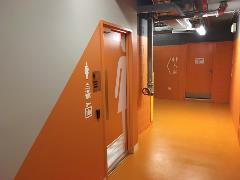“It is the long history of humankind (and animal kind too) that those who learned to collaborate and improvise most effectively have prevailed.” (Charles Darwin, 1809 - 1882)

Some of the best projects we deliver are within collaborations. When architects, designers, facilities managers, designers, marketers, and signage companies work together, you can be sure any premises or event venue will be an on-brand, visual work of art that translates into a positive experience for visitors and customers.
Why?
It comes down to a cohesive multi-disciplinary best practice.
Sometimes these partnerships last only for the duration of a single project, but others result in ongoing relationships that produce benchmark environments in industries areas like aged care, medical services, restaurants, and sports centres.

If you can create and sustain good partnerships, you have secured an important business advantage. For SIGNWAVE, forming ongoing alliances between disparate but complementary specialists not only means that our businesses are collectively, increasingly in demand, but we can deliver better results and quality facilities - from exterior to interior.
The benefits of collaboration include:
- Shared best practices
- Greater efficiencies
- Improved communication and cooperation throughout the build
- Greater responsiveness and flexibility to react quickly to changing briefs
- Continuity and stability of supply
- Greater ability to meet deadlines and launch dates
How to form profitable collaborations
Collaborating suppliers on any project need to band together, share information and truly cooperate to make things work.
This means from the outset, all collaborators need to work together to develop shared goals and a clear understanding of deliverables and timing.
From time to time, things won’t run smoothly. In order to encourage continued progress, productive feedback should be shared whether or not the output does or doesn’t meet expectations. Even the well organised and carefully carried out may sometimes miss the mark.
In short, to collaborate successfully, all parties need to be flexible and creative, solve problems, make decisions, think critically and communicate ideas effectively.
Your clients will thank you for it.